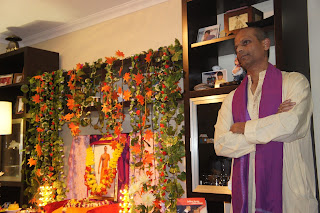I feel lucky
and blessed that I got a chance to attend Aniruddha Pournima and Adhiveshan
ceremony on 24th and 25th of Nov 2013. I don’t have words
to express my feelings when I got chance to watch our dear P.P. Bapu in
Aniruddha Pournima and Adhiveshan. All I can say is that I was just watching
Bapu and felt very delighted while collecting his blessings and grace.
The Adhiveshan’s
environment was full of Bhakti, bliss and
it was beautiful. Here are some points that we have gathered from Adhiveshan :
·
How
should be our love towards Bapu? – Unconditional love
·
How
should be our love and service towards new shraddhavans arriving in our Upasana
Kendra – Bapu wants us to give him/her all support and at the same time guide them
to walk on the path of Bhakti. If we do not provide them with all the
information (assuming they know everything), then we may end up misguiding them.
·
When
we are watching Bapu and his mesmerising expressions (that indicates his
unconditional love for us), we should observe those expressions very carefully and
at the same time try to build the same feelings and expressions within ourselves
towards him. (For e.g. when he’s praying to Adi Mata and performing Aarti).
·
How
should our Upasana Kendra be – It should be full of Bhakti and love for Bapu.
Please visit below link for Gunasankirtan of
Param Poojya Aniruddha Bapu:





.png)
.jpg)
.jpg)
.jpg)
.jpg)
.jpeg)































